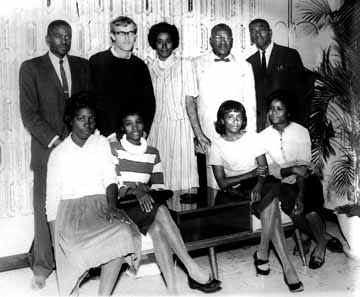
The Freedom Riders were a very brave group participating in the Civil Rights Movement in 1961. They were fighting to desegregate busses, which in theory should already have happened. The practice, however, was very different.
1. What are Freedom Riders?
The Freedom Riders are not specific people, but rather a group. It is a term used to refer to those who rode interstate buses into segregated states in 1961. They rode as part of the Civil Rights movement, trying to gain equality for all.
2. Why was there a need?
Although segregation was illegal, it was still practiced through local laws and tradition. The Freedom Riders challenged these laws, and the unenforcement of the new anti-segregation policies.
3. Were the rides legal?
The rides were 100% legal. The Supreme Court of the United States ruled in several cases, such as Boynton v. Virginia, making segregation illegal in interstate bus travel. It ruled the local laws were unconstitutional.
4. Local authorities disagree
The Freedom Riders were met with public upset. The local authorities believed them to be breaking the law, even though their local laws had been ruled illegal. The police went so far as to let the Freedom Riders be attacked without intervention. Some were arrested for their rides.
5. The First Ride
The first ride was May 4th, 1961. It included 13 riders, of which 7 were black and 6 were white. The ride was to be from Washington, DC to New Orleans. The goal was for at least one black person to sit up front, the typical “whites only” area of the bus, and for at least 1 interracial pair to sit together, which was not seen in the South. At least one black person would sit in the back, following the segregation rules to avoid arrest and be able to plan bail for those arrested. One rider was attacked, and at least 3 were arrested during the first ride.
6. Bus burning
During the first ride, when the group entered Anniston, Alabama, a mob attacked the bus. The tires were slashed and the bus was lit on fire, with the doors being held shut. The mob had to retreat and the riders were able to get off the bus, however they were refused medical treatment. Many had to be rescued from the city. In Birmingham, Alabama, more riders were beaten on a different bus, on police orders.
7. Sponsors
The Freedom Riders and rides were sponsored by CORE (Congress of Racial Equality) and SNCC (Student Nonviolent Coordinating Committee). CORE sponsored most of the freedom rides, feeling they were important to gain equality.
8. Goal
The main goal of the freedom riders was to bring national attention to the fact that the Supreme Court rulings were being disregarded. The freedom riders and CORE wanted the whole nation to know exactly what was going on, and not just hear rumors about what happened in the South. Not many were brave enough to disobey the local segregation laws, so the Freedom Rides were started because it would have taken a lot longer to happen naturally.
9. Riders fill the prisons
More and more rides continued, despite urging from the president to stop them. Eventually physical violence was kept to a minimum by a deal that allowed local law enforcement to arrest the riders for breaking local (illegal) laws. This filled the prisons with over 300 freedom riders. The riders refused to stop singing freedom songs, which earned them the punishments of having their sheets and toothbrushes taken away.
10. Resolution
The freedom riders were rewarded for their persistence. In September, five months after the rides started, the ICC (Interstate Commerce Commission) changed their policies. Effective November 1st, anyone could sit anywhere they wanted to on a bus.

Leave a Reply